Florida is known for having more termites than other mainland US states. A series of habitat-specific elements such as the state’s sub-tropical weather is known for creating a good environment for termite development.
The combination of warmth and moisture Florida is known for favors more termite populations compared to other US states.
Table of Contents
Are There Termites in Florida
There are more than 20 species of termites in Florida. Some of them are considered pests while others aren’t.
While many termites in Florida aren’t actual pests, they are distinguished into 3 groups which are common to the state. This includes subterranean, dry wood, and damp wood termites.
Types of Termites in Florida
From the 3 categories of termites Florida is known for:
- Subterranean termites: nesting in soil – the most acute threat to home destruction.
- Dry wood termites: nesting in dry wood.
- Damp wood termites: humidity-seeking.
Subterranean Termites
Eastern Subterranean Termite
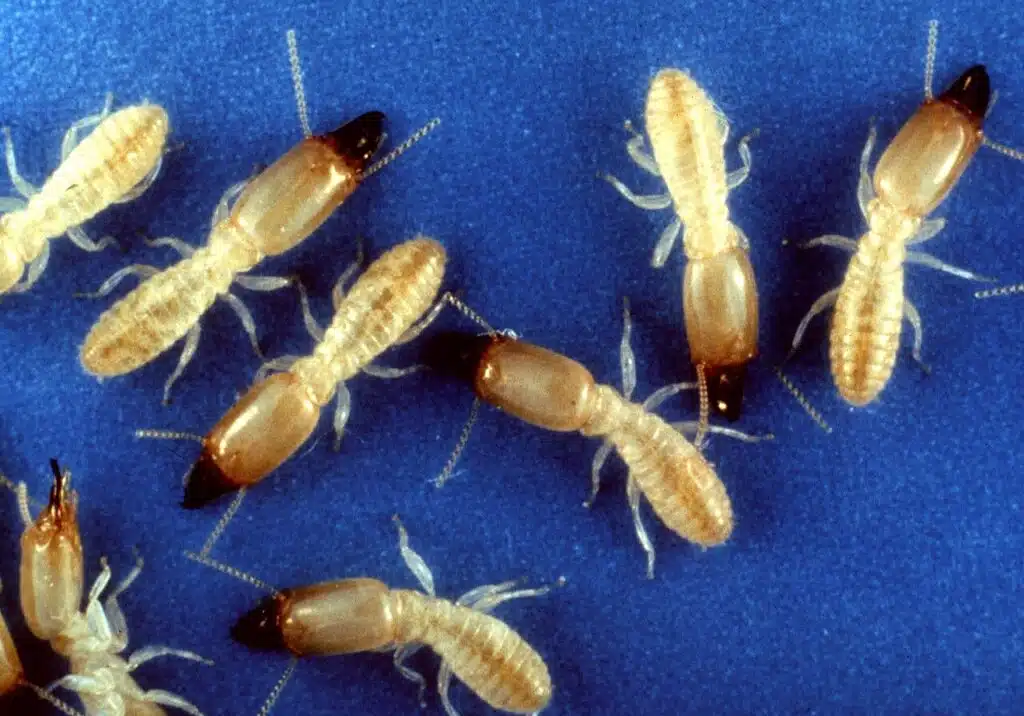
These termites are very common in Florida and seen as real home pests. The Eastern Subterranean Termite is the most destroying termite in the country.
Eastern Subterranean Termites live in large colonies of thousands of individuals where casts of workers, soldiers, and reproductive termites are distinguished.
The species accounts for most spending against termite control in the state and their impact is believed to be primarily on flooring, structural wood, and decorative wood pieces.
The biggest issue associated with the damage made by these termites is that the wood appears healthy on the outside. The species is known to live in the ground and then build mud access routes towards homes.
Cuban Subterranean Termite
Cuban Subterranean termites are known for their ability to fly. They are often seen flying just before sunrise as they are mostly nocturnal.
These termites are common in regions of Florida such as between the Florida Keys and Palm Beach.
Attracted to light, these termites are common around homes.
However, they aren’t seen as the largest termite threat, mostly because they only damage parts of the wood which are in contact with soil.
Formosan Subterranean Termites
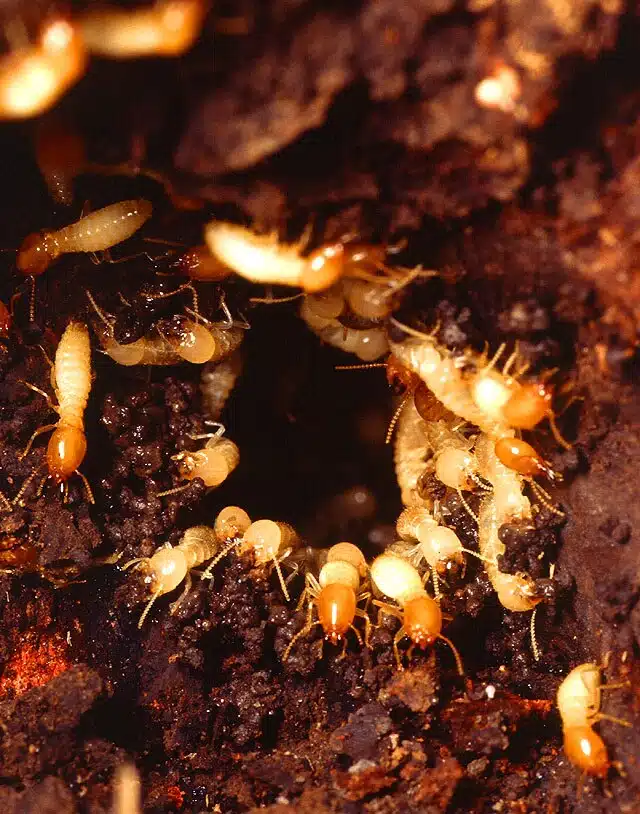
Common in Florida, Formosan Subterranean Termites are seen as a major threat for homes across the state. These termites are very destructive.
The species feeds on cellulose but it also chews its way through other materials such as plaster and even through thin pieces of metal. They go through these materials in search of wood and moisture.,
High economic losses are associated with these termites. Their habitat includes almost the entire state of Florida, even if the damages here are somewhat smaller than the damage the species creates in other areas such as New Orleans and Hawaii.
Asian Subterranean Termites
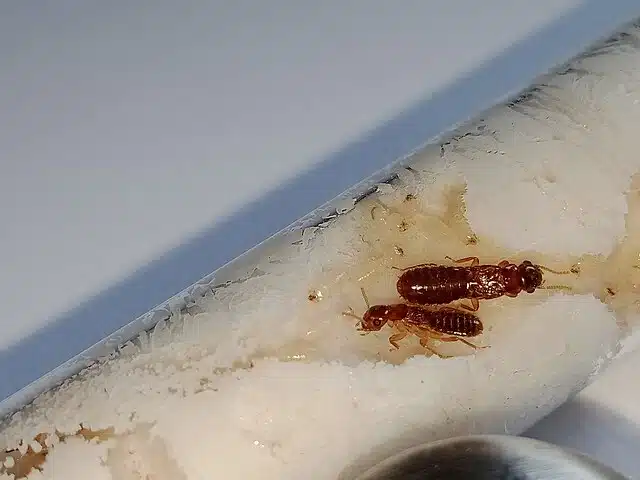
These termites are known for large teardrop-shaped heads. They also have a large forehead opening.
Asian Subterranean Termites are very common in South Florida and they’re expected to remain restricted to this area for climatic reasons.
These are serious termites that cause structural damages to homes if they establish themselves as a major colony.
It’s estimated Asian Subterranean Termites will increase home infestation cases in Southern Florida over the following years.
West Indian Subterranean Termites
These termites are identified by their rectangular head. They are often found in tropical climates around the world.
In Florida, they are mainly present around Miami.
Their impact on homes can be reduced with early detection. It’s estimated the damages created by West Indian Subterranean Termites will increase in Florida as with Asian Subterranean Termites’ predicted damages.
Drywood Termites
Florida Drywood Termite
These termites grow to a maximum size of 3/8”. They have 6 legs, antennae, and the ability to fly.
Known for saw-like jaws, Florida Drywood Termites thrive in warm climates. These species prefer dry wood found above the ground to nest in.
Damages inflicted by the species are normally hard to detect at first. However, the species isn’t as common as others of the subterranean termite genus.
West Indian Dyrwood Termite
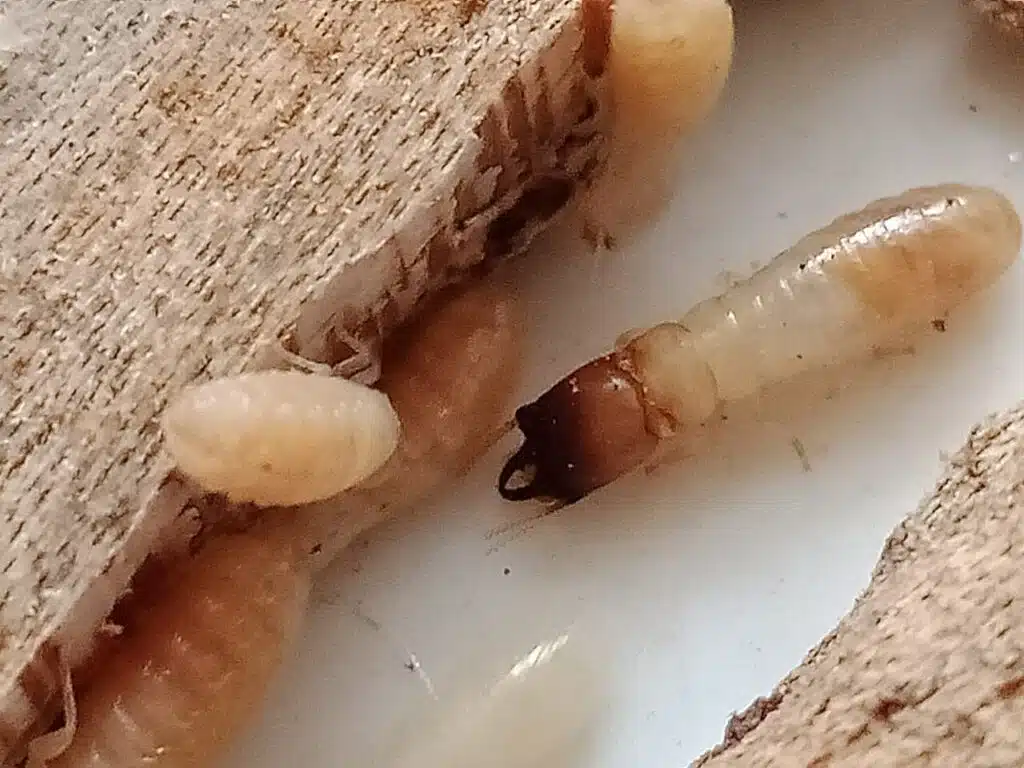
The West Indian Drywood Termite is known to be a social species. It can come with considerable structural wood damage as it has chewing mouthparts.
They are normally recognized by their elongated cylindrical body, long wings, and dark body coloring.
The species has been introduced to the US and studied extensively. The species is accountable for up to $30 million in damages in the state of Florida and Hawaii (regions where it’s mostly present in).
Western Drywood Termite
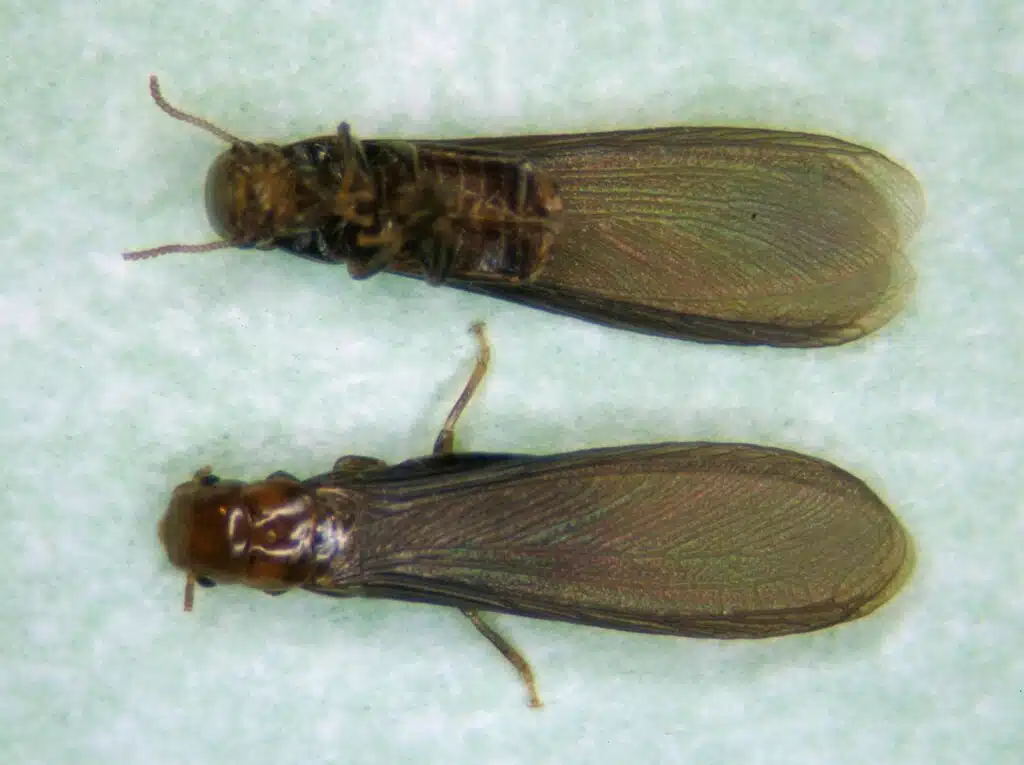
This species is most common in Florida and California. It’s known to have a dark orange coloring in the caste of alate (swarmers). The soldiers cast have a red-brown color.
Western Drywood Termites don’t have true workers cast.
September, October, and November are the months these termites are known for their flight in Florida.
It’s believed this species is going to grow among new urban developments across the state.
Dampwood Termites
Florida Dampwood Termite
These termites are common across woodlands, urban areas, and coastal locations in Florida.
As their name suggests, these termites are most common in damp wood. This is a type of wood that is in contact with the ground where it draws moisture from.
Damp wood that attracts Florida Dampwood Termites also includes exposed wood that rain falls freely on. Roof leaks are also known for quickly creating a perfect habitat for the species.
Since these termites require damp wood, they aren’t as destructive as other species in the state. It also takes years for these termites to create considerable damage to homes or even trees.
Are Termites Dangerous?
Termites in Florida can be very dangerous. The combination of warm weather and high humidity makes the state a perfect habitat for multiple species of termites.
These are characterized by the following elements that make them feared pests.
Structural damages

Termites are known for creating structural damages in wood. They live socially in colonies and can even sometimes fly to the nearest home.
Structural damages to homes can be permanent. Eradicating termites from homes is also very difficult, especially if colonies aren’t discovered in their early stages.
Damages aren’t visible at first
Termite damages aren’t immediately visible. By the time these damages are visible, a home might not fully get rid of termites.
Visible signs of damage include cracked walls, doors, and windows that don’t shut properly and even reduced foundation support.
Why Do I Have a Termite Problem?
Termite problems are often diagnosed in a lengthy process. In general, decaying wood and wood that has been in contact with water in warm tropical climates can attract termites in the area.
Humidity
High humidity creates the perfect conditions for wood to attract termites. They use the water inside wood efficiently and they can also make their way through its fibers easily.
A leaky roof
There are multiple causes for high humidity inside the house. They range from a leak problem to a house that hasn’t been built following building code.
A leaky roof can create moisture problems down to the foundation. It can be one of the biggest causes of a termite invasion.
Leaky pipes
Leaky pipes are a common problem for termites. The biggest issue with leaky pipes is that they might not be immediately visible.
Some leaks are small, gradual. These are the hardest to detect and termite prevention checkups often start by following along the pipes inside the house for signs of leaks.
Drainage issues
Improper drainage can also lead to high humidity and for wood to come in contact with water. Drainages are generally checked together with piping in known termite habitats.
Direct house contact with soil
Many types of subterranean termites prefer to make their way into homes that are in direct contact with the soil. Some termites even build mud paths to these types of homes.
When Do Termites Swarm in Florida?
Most termites are known to swarm Florida all months of the year but not in December.
Florida termites are known to relocate in spring but they are known to swarm through the year, especially in Southern Florida.
Southern regions of the state are known for having almost constant warmth and humidity which promotes termite swarming throughout the year.
Other differences in the preferred swarming season are seen outside these regions of Florida.
Signs of Termite Infestation
Detecting termite infestation is a lengthy process. The following cues can be used to determine a possible infestation.
Hollow sounding wood
Wood that sounds hollow when tapping is an indication of termites or another type of damage. This is one of the tool-less preliminary methods to detect termites.
Small holes in drywall or metal sheets
Termites can sometimes go through other types of materials, not only wood. Species such as Formosan Subterranean Termites are known for their capacity to chew through thin metal as well.
Wall paint that comes off
Peeling wall paint may or may not be an indication of termites. However, it can be an indication of high humidity inside the house which can be an environment for future termite colony formation.
Uneven loose tiles
Loose tiles are sometimes an indication of humidity or significant termite floor damage. Any piece of lost tile should be a sign that further investigation is needed.
Mud paths from the ground
Termites such as the Eastern Subterranean Termite are known for creating mud paths from the ground to the house.
These mud paths should be easy to locate with the minimum investigation of the home’s surroundings.
Termite wings around the house
Termites lose their wings and these wings are often seen on the patio, on the driveway, or elsewhere around the house. While not a definite sign of a termite problem, it can still indicate the presence of termites in the area.

How to Get Rid of Termites in Florida
Getting rid of termites is a complicated process.
Some types of termite damage can only be dealt with by first vacating the home for a complete inspection while other methods allow residents to remain inside of the house.
Here are a few common methods of keeping termites away or dealing with them properly.
Using wood preservatives on the house
Wood preservation chemicals and solutions are a good option for keeping termites away. Almost all wood used for homebuilding in termite areas needs to have some type of added treatment.
Chemical barriers in the soil
Chemical barriers are often installed as a means to keep subterranean termites from making their way upwards towards the house.
These are mostly installed before building the house.
Baits
Termite baits are sometimes used to control subterranean termites. They are often made with a small amount of insecticide.
These baits are put in the ground in key areas around the house.
Florida Termite Prevention
Preventing termite home attacks is possible by following a few steps/
Use boric acid agents
Boric acid solutions have been shown to offer long-term wood protection. These solutions are sprayed onto woods around the house.
Install termite monitoring systems around the house
Termite monitoring systems are a technological method of keeping an eye on termites. There are various monitoring systems but most work on a bait basis to attract termites.
Termite monitoring systems are installed feet away from each other around the house.
Fix water leaks immediately
Water leaks are responsible for many termite invasions. Even a small water leak leads to wood that is wet which attracts many types of termites as they need humidity to thrive.
Summary
There are multiple types of termites in Florida. Many of them are found in Southern Florida even if there are various species found across the state.
Termites in Florida can be categorized into subterranean termites, dry wood termites, and damp wood termites.
These have different characteristics but all of them can be detrimental to homes to different degrees.
Getting rid of termites in Florida is mainly a task for professionals. From spraying the entire outside area of the house to dealing with any type of water leak immediately, preventive measures are often a combination of tactics that are used to keep termites away.
Further Reading: